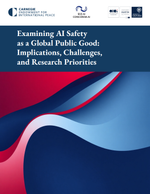Nature Reviews Earth and Environment
Palmer, P.I., Wainwright, C.M., Dong, B. et al. Drivers and impacts of Eastern African rainfall variability. Nat Rev Earth Environ (2023). https://doi.org/10.1038/s43017-023-00397-x
View Journal Article / Working PaperEastern Africa exhibits bimodal rainfall consisting of long rains (March–May) and short rains (October–December), changes in which have profound socioeconomic and environmental impacts. In this Review, we examine the drivers and corresponding impacts of Eastern African rainfall variability. Remote teleconnections, namely the El Niño–Southern Oscillation and the Indian Ocean Dipole, exert a dominant influence on interannual variability. From the mid-1980s to 2010, the long rains have tended toward a drier state (trends of −0.65 to −2.95 mm season−1 year−1), with some recovery thereafter, while the short rains have become wetter since the mid 1980s (1.44 to 2.36 mm season−1 year−1). These trends, overlain by substantial year-to-year variations, affect the severity and frequency of extreme flooding and droughts, the stability of food and energy systems, the susceptibility to water-borne and vector-borne diseases, and ecosystem stability. Climate model projections of rainfall changes differ, but there is some consensus that the short rains will deliver more rainfall than the long rains by 2030–2040, with implications for sustaining agricultural yields and triggering climate-related public health emergencies. Mitigating the impacts of future Eastern African climate requires continued investments in agriculture, clean water, medical and emergency infrastructures, and development and adoption of adaptation strategies, as well as targeted early-warning systems driven by improved meteorological observations.




